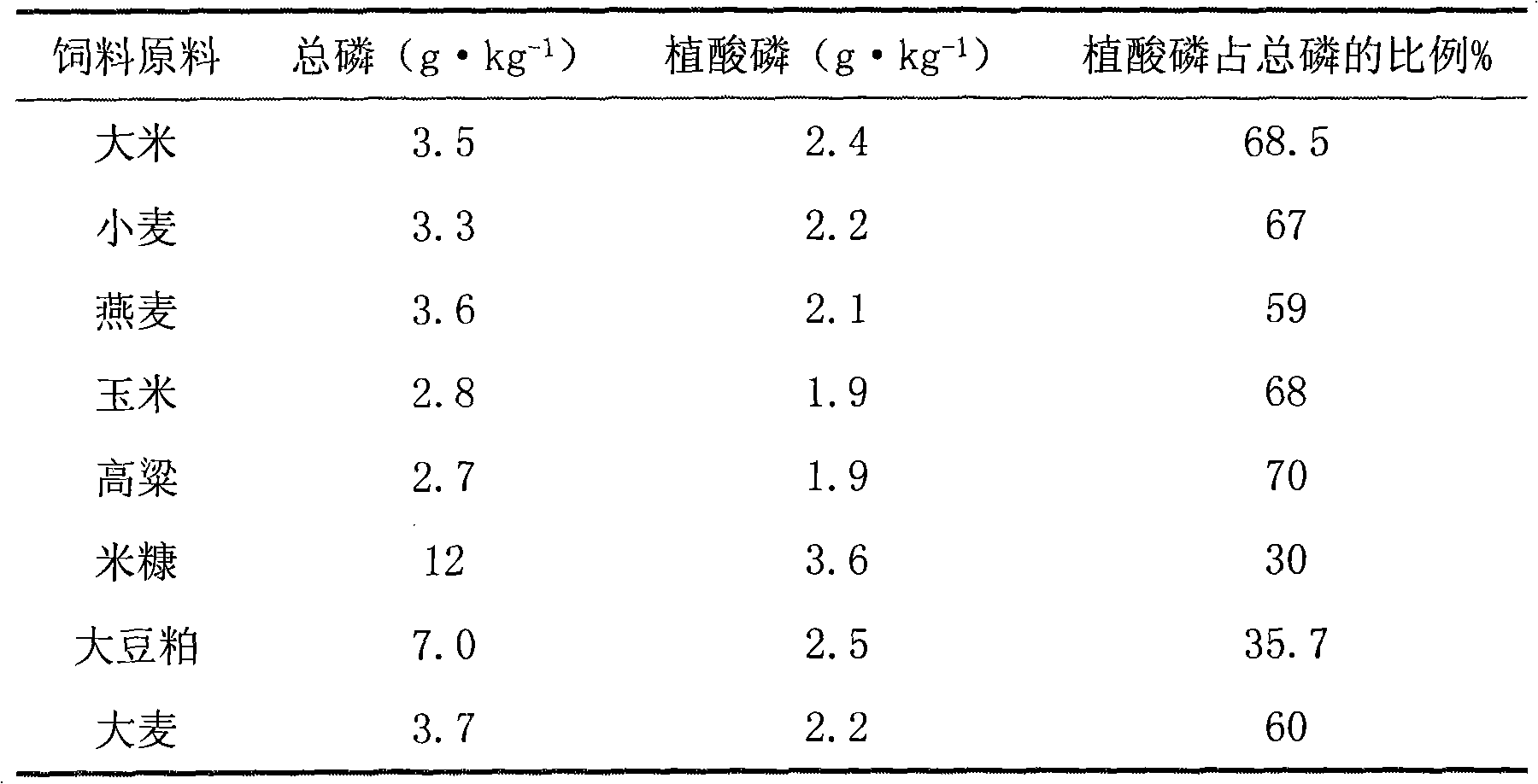Process for preparing phytase by efficiently fermenting recombinant pichiapastoris
A technology of Pichia pastoris and phytase, applied in the direction of hydrolase, microorganism-based methods, biochemical equipment and methods, etc., can solve the problems of high preparation cost of phytase, large amount of methanol added, etc., and achieve high-efficiency fermentation production Effect
- Summary
- Abstract
- Description
- Claims
- Application Information
AI Technical Summary
Problems solved by technology
Method used
Image
Examples
Embodiment 1
[0020] The strain used was Pichia pastoris 602, provided by Wenzhou Conch Challenge Bioengineering Co., Ltd.
[0021] Pick a single colony from the plate and insert it into YPD seed medium (500mL Erlenmeyer flask liquid volume: 125mL) (1L contains: yeast powder 10g, peptone 20g, glucose 20g) at 30°C for 20h at 220r / min. Then connect in the 25L fermentation tank that 12L batch fermentation culture medium is housed by 10% inoculum size (1L contains: glucose 30g, ammonium sulfate 15g, magnesium sulfate 8g, potassium sulfate 7.5g, potassium dihydrogen phosphate 3.5g, calcium sulfate 1.0g, potassium hydroxide 1.2g, PTM 14mL), adjust the pH to 4.5 with ammonia water before inoculation. Maintain the dissolved oxygen concentration above 25% by controlling the air flow and speed. The batch culture ends after the carbon source is metabolized, and then the feed medium (1 L containing: 250 g of glucose) is added to make the bacteria continue to grow. During the 24 hours of fermentation. ...
Embodiment 2
[0024] The strain used was Pichia pastoris 602, provided by Wenzhou Conch Challenge Bioengineering Co., Ltd.
[0025] Pick a single colony from the plate and insert it into YPD seed medium (500mL Erlenmeyer flask liquid volume 125mL) (1L contains: yeast powder 10g, peptone 20g, glucose 20g) at 30°C for 20h at 220r / min. Then insert in the 25L fermentation tank that 12L batch fermentation culture medium is housed by 10% inoculum size (1L contains: glucose 50g, ammonium sulfate 20g, magnesium sulfate 9g, potassium sulfate 5g, potassium dihydrogenphosphate 2g, calcium sulfate 1.0g , potassium hydroxide 1.2g, PTM 14mL), adjust the pH to 4.7 with ammonia water before inoculation. Maintain the dissolved oxygen concentration above 25% by controlling the air flow and speed. The batch culture ends after the carbon source is metabolized, and the feed medium (1L containing: glucose 250g) is added to continue the growth of the bacteria, and the carbon source (glucose) is stopped after 24 ...
Embodiment 3
[0028] The strain used was Pichia pastoris 602, provided by Wenzhou Conch Challenge Bioengineering Co., Ltd.
[0029] Pick a single colony from the plate and insert it into YPD seed medium (500mL Erlenmeyer flask liquid volume 125mL) (1L contains: yeast powder 10g, peptone 20g, glucose 20g) at 30°C for 20h at 220r / min. Then connect in the 25L fermentation tank that 12L batch fermentation medium is housed by 10% inoculum size (1L contains: glucose 60g, ammonium sulfate 25g, magnesium sulfate 9g, potassium sulfate 9.5g, potassium dihydrogen phosphate 3.5g, calcium sulfate 0.8g, potassium hydroxide 1.2g, PTM 14mL), adjust the pH to 5.0 with ammonia water before inoculation. Maintain the dissolved oxygen concentration above 25% by controlling the air flow and speed. The batch culture ends after the carbon source is metabolized, and the feed medium (1L containing: glucose 250g) is added to continue the growth of the bacteria, and the carbon source (glucose) is stopped after 24 hou...
PUM
 Login to View More
Login to View More Abstract
Description
Claims
Application Information
 Login to View More
Login to View More - R&D
- Intellectual Property
- Life Sciences
- Materials
- Tech Scout
- Unparalleled Data Quality
- Higher Quality Content
- 60% Fewer Hallucinations
Browse by: Latest US Patents, China's latest patents, Technical Efficacy Thesaurus, Application Domain, Technology Topic, Popular Technical Reports.
© 2025 PatSnap. All rights reserved.Legal|Privacy policy|Modern Slavery Act Transparency Statement|Sitemap|About US| Contact US: help@patsnap.com

